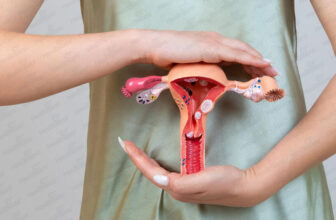
We don’t need to tell you, ladies, periods can be a great inconvenience. You must have experienced it yourself – the painful cramps, sudden mood swings, bad headaches, nausea and so on. These issues are commonly experienced and gradually go away when periods end.
However, there are other health issues which may seem common but are on the extreme end and may point to some medical conditions. Here are some of the instances that warrant medical help.
Irregular periods
Irregular periods can be worrisome and uncomfortable, but it is common to have irregular bleeding in the first two years after the onset of menstruation; for instance, a woman may experience two periods consecutively in one month or could sometimes go four months or more without having the next period. It is important to consult a gynaecologist if periods are extremely irregular or occur more than three months apart.
Menorrhagia (Heavy periods)
Some periods are heavier than others, but if they become extremely severe, they can impact the quality of life or even lead to anaemia. Anaemia is a disorder linked with iron deficiency. Anaemia can cause persistent fatigue, problems with physical exertion, light-headedness and dizziness, and even fainting. Menorrhagia is often accompanied by painful cramps owing to large clots.
Menstrual bleeding warning signs that could result in anaemia include:
- A flow that extends beyond eight days
- Leaking through a tampon or pad in less than an hour
- Leaking at night through the bedding
- Clots larger than a centimetre in size
Dysmenorrhea (Painful Cramps)
Dysmenorrhea is one of the most common gynaecological problems in menstruating women. It is a painful condition characterised by severe cramping that begins shortly before or at the onset of menses. Pain originates in the lower abdomen but can radiate to the lower back and thighs. Dysmenorrhea is usually referred to as primary or secondary:
Primary dysmenorrhea:
It is usually defined as cramping pain that occurs during menstruation, in the absence of any identifiable pelvic disease. The cramps occur due to contractions in the uterus and are usually more very severe during heavy bleeding.
Secondary dysmenorrhea:
This type of menstrual-related pain is caused due to an underlying medical or physical condition, such as endometriosis or uterine fibroids, or due to a structural abnormality within or outside the uterus.
Menstrual migraine
Menstrual-related headaches (MRH) are a common class of headaches that occur in women during the menstrual cycle. As per research, approximately 4 in 10 women will get one in their lifetime. About half of those women who get migraines report a noticeable link with their periods.
Researchers are not sure what causes migraine. Studies estimate that the hormones that control the menstrual cycle may affect headache-related chemicals in the brain. It has been found that the headache is related to a drop in levels of the hormone estrogen or the release of prostaglandin.
Closing thoughts
Period irregularities are common, thus irregularities in the flow, whether heavy or light, are usually not cause for concern. However, you should contact your doctor immediately if you feel excruciating pain or a strong flow of blood clots. Additionally, if your periods come less than 21 days apart or more than 3 months apart, it is advised that you see a doctor.





